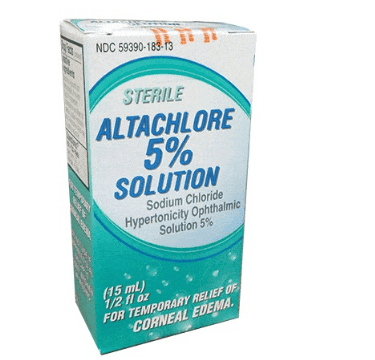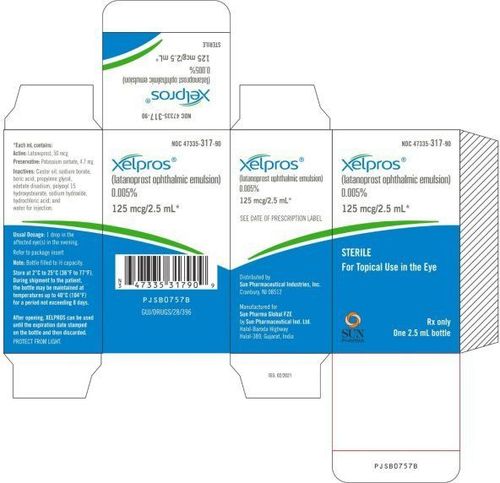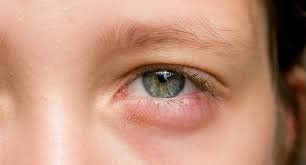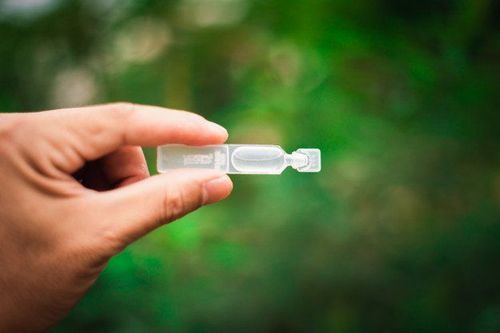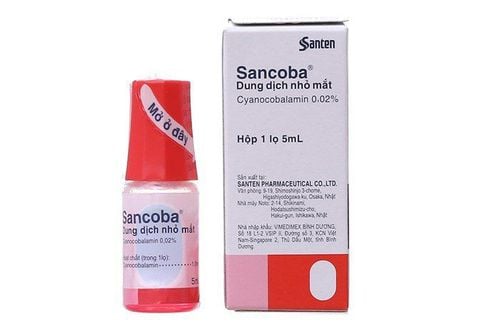This is an automatically translated article.
What is Bleph-10? Bleph 10 is an ophthalmic solution with the main ingredient being the antibiotic Sulfacetamide (in the form of sodium salt). Bleph-10 is used to treat bacterial eye infections, most commonly conjunctivitis.
1. What is Bleph-10?
Bleph 10 is an ophthalmic solution containing the main active ingredient, the antibiotic Sulfacetamide sodium at a concentration of 10%.
Bleph-10 is indicated in the treatment of conjunctivitis and some other superficial infections of the eye caused by strains of bacteria that are still sensitive to Sulfacetamide.
Mechanism of action of Bleph 10 is bacteriostatic through inhibiting the synthesis of Dihydrofolic Acid of bacteria, more specifically, the antibiotic Sulfacetamide will prevent the binding of Pteridine to aminobenzoic acid through competitive inhibition mechanism. Dihydropteroate Synthetase Enzyme. Strains are resistant to the Sulfacetamide in Bleph-10 by altering the dihydropteroate synthase enzyme or by producing large quantities of Aminobenzoic Acid.
Susceptible agents to the antibiotic Sulfacetamide in Bleph 10 include Escherichia coli, Staphylococcus aureus (Staphylococcus aureus), Streptococcus pneumoniae (pneumococcal), Streptococcus (streptococcal viridans), Haemophilus influenzae, Klebsiella and Enterobacter.
In contrast, topical Sulfacetamide was not effective against some strains of Neisseria, Serratia marcescens and Pseudomonas aeruginosa. Besides, there are a significant number of staphylococci strains that are completely resistant to Sulfacetamide in Bleph-10.
2. Some notes before taking Bleph 10
Patients should avoid using Bleph 10 eye drops if they have any of the following:
History of allergy to Sulfacetamide (or other sulfur-based active ingredients) or any of the ingredients in Bleph -ten . Some symptoms of an allergic reaction to Bleph-10 include rapid breathing, wheezing or difficulty breathing, swelling of the face, lips, tongue or other parts of the body, skin rash, itching or hives. ; The drug Bleph-10 shows signs of damage and is not intact; Bleph 10 pill vial or packaging shows signs of tampering; Bleph 10 eye drops solution loses its dark brown color; Bleph-10 has expired. Using drugs beyond the expiry date can make the treatment less effective and even harmful; The time to open the cap of the Bleph-10 vial has been more than 4 weeks; Patients wearing contact lenses : Wearing contact lenses is generally not recommended when an eye infection has been diagnosed; Do not use Bleph-10 in children under 2 months of age. Before starting to use Bleph-10, patients should consult their doctor if they have the following problems:
History of allergy to other drugs, food allergies or preservatives; Pregnant or planning to become pregnant: Bleph-10 is not recommended during pregnancy unless clearly needed; Breast-feeding: Bleph-10 can affect a nursing baby through breast milk; The patient was scheduled for surgery under general anesthesia.
3. How to use Bleph 10 . eye drops
Bleph-10 is produced completely aseptically in an opaque white LDPE plastic vial and the dropper and polystyrene cap are both white.
Bleph 10 can only be used with eye drops. The usual recommended dose is 1 or 2 drops in the affected eye every 2-3 hours during the day, frequency may be less frequent at night and should be applied 1 time at bedtime.
How to use Bleph 10 eye drops can be easier when the patient is sitting or lying down with the following instructions:
To use Bleph 10 eye drops, the patient must first tear off the protective seal of the vial. . The solution inside the drug Bleph-10 is only guaranteed to be sterile if the packaging and sealing of the vial is intact. If they have been broken, the patient should discard the vial; Wash hands thoroughly with soap and water; Shake the Bleph-10 vial thoroughly before removing the cap; Hold the Bleph-10 vial upside down with one hand between thumb and index finger; Use your other hand to gently pull down the lower eyelid to form a conjunctival sac; Tilt your head back and look up; Place the tip of the Bleph-10 vial near the lower eyelid but absolutely do not touch the eye directly; Squeeze the vial gently to drop 1-2 drops of Bleph 10 (according to the dose directed by your doctor) into the conjunctival sac of the eye; After instillation, patients should close their eyes gently to cover the entire conjunctival cavity, do not blink or rub eyes with hands; Repeat the same steps for the other eye (if necessary); Close the cap of the Bleph-10 vial; Wash hands again with soap and water. Some notes during the use of Bleph-10:
When using Bleph 10 eye drops, be careful not to let the tip of the dropper directly touch your eyes, eyelids or anything else to avoid contaminating the vial. medicine; Patients need to adhere to the time to take Bleph-10 as prescribed by the doctor or pharmacist; If eye condition still does not improve after using Bleph 10 eye drops for about 2 to 3 days, patient should consult doctor or pharmacist for appropriate intervention.
4. Some side effects when using Bleph-10
Some of the most frequently reported side effects with Bleph-10 use are local irritation, stinging and burning sensation in the eye where the eye drops are applied.
In addition, some of the less common side effects of Bleph 10 eye drops include nonspecific conjunctivitis, conjunctival congestion, secondary infections, and allergic reactions. In particular, corneal ulcers caused by bacteria and fungi can occur during treatment with ophthalmic preparations containing sulfonamide antibiotics (including Bleph-10).
Fatal events with Bleph-10 have also been reported, although rarely, mainly due to severe reactions to sulfonamides in Stevens-Johnson syndrome, toxic epidermal necrolysis, leukopenia granulomatous, fulminant hepatic necrosis, aplastic anemia and other blood disorders.
Please dial HOTLINE for more information or register for an appointment HERE. Download MyVinmec app to make appointments faster and to manage your bookings easily.




